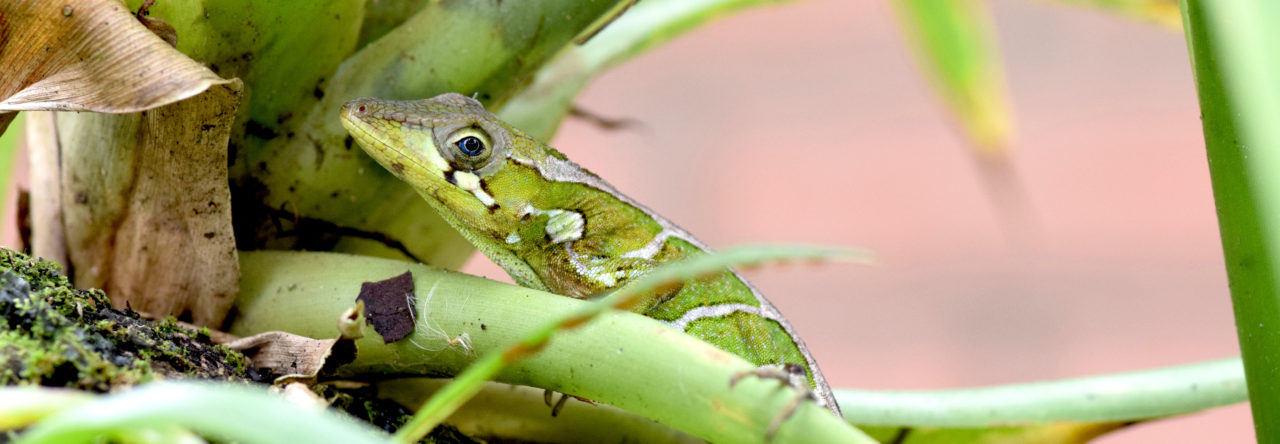
Where do you work and what do you do?
I am an Assistant Research Professor in the Department of Biological Sciences at Binghamton University, State University of New York. I am also the Associate Director of Research of the Amazon Conservatory for Tropical Studies, outside Iquitos, Peru. My research group studies ecology at the organismal level, with a focus on behavior and herpetology. I primarily conduct fieldwork in Costa Rica and Peru. At the university, I teach courses in animal behavior and ecology, and I am involved with initiatives to promote underrepresented students in biology. I was a postdoctoral fellow at Yale University and received my PhD in Ecology from Penn State in 2013.
What aspects of anole biology do you study, and what have you learned?
My background in behavioral ecology first nudged my interest in anoles towards communication and reproductive behavior. I have a particular interest in understanding how sexual signals function and evolve. My group studies anole dewlaps and their costs and benefits. The use of color and patterns, both on the dewlap and the entire body, is also a focus in my group. We use both observational and experimental techniques to better understand how anoles use sexual coloration and behavioral displays to maximize fitness. We’ve found that there are some significant risks posed by bearing conspicuous sexual signals, and that there is a variety of ways in which body color can be used plastically to benefit anoles.
Our work is based on natural history observations, and so we tend to follow where the anoles lead. Lately, that has led us down the path of examining their antipredator adaptations. We are investigating the fascinating underwater diving and rebreathing behaviors of the semi-aquatic anoles, from ecological and physiological perspectives. We documented that some semi-aquatic anole species spend considerable time underwater when pursued. Our interest in antipredator strategies includes a focus on the mechanics of escaping predators, whether that is by swimming, diving, running, or leaping. Semi-aquatic anoles are also remarkably cold tolerant and have very low body temperatures, and so we also investigate their thermal ecology and possible effects of climate change.
How and why did you start studying anoles?
Allergies, initially! I kept anoles as pets almost my entire childhood because a cat or dog was out of the question. Back then, I spent an embarrassing number of hours just watching what anoles did in their tanks. This cemented anoles in my head as the coolest possible lizards Years later, after spending all of my research life studying other cool herps, I stumbled upon anoles again on a teaching trip to Costa Rica. From the moment I saw Anolis aquaticus in the streams, they completely captured my attention. Their habitat and behaviors were so unique from what I had learned about anoles, I knew I had to make them a priority.
What do you love most about studying anoles?
Two things. Their remarkable adaptations – how evolution has so astoundingly shaped them to particular environments. I love how much is known, but also how much is still unknown about their morphological, physiological, and behavioral traits – I love the element of surprise! Second, I’m still fascinated by simply watching their interactions with one another, which I could do for hours.
What is your favorite anole species?
I absolutely have a favorite – Anolis aquaticus. They’re such quirky representatives of the mere handful of semi-aquatic anoles out there.
Where can people learn more about you and follow you online?
Website: www.lindseyswierk.com
Twitter: @LindseySwierk
Instagram: lindseyswierk













